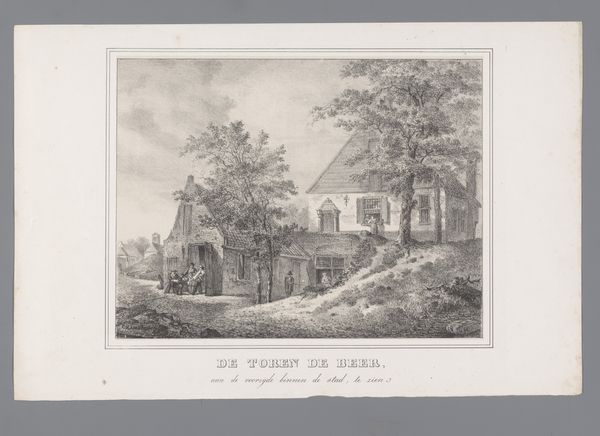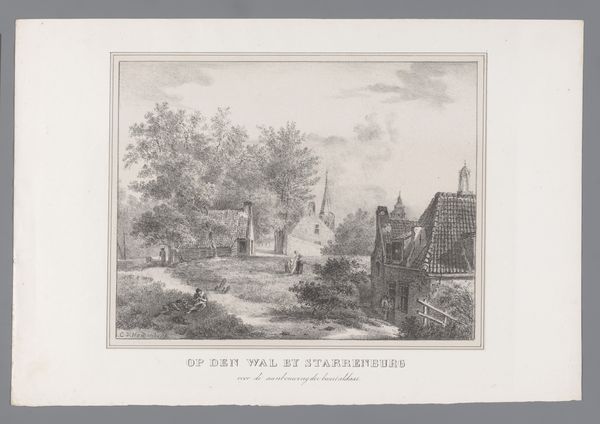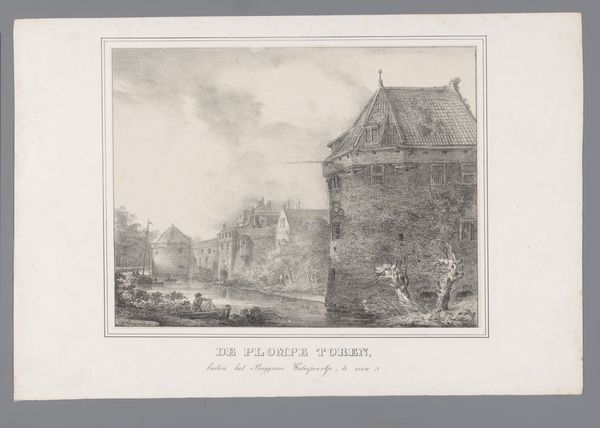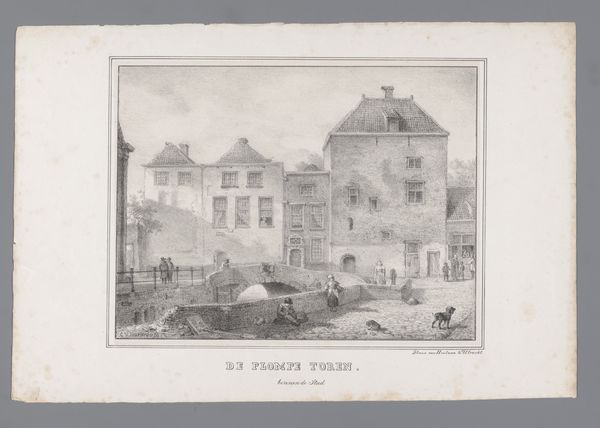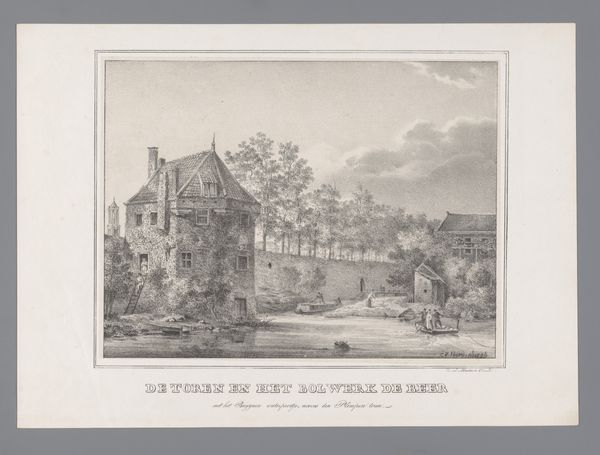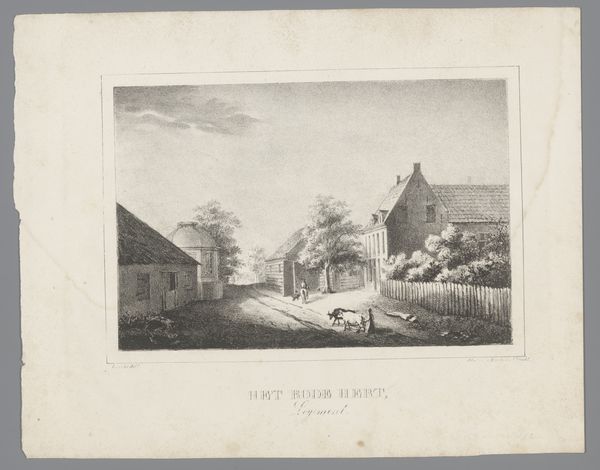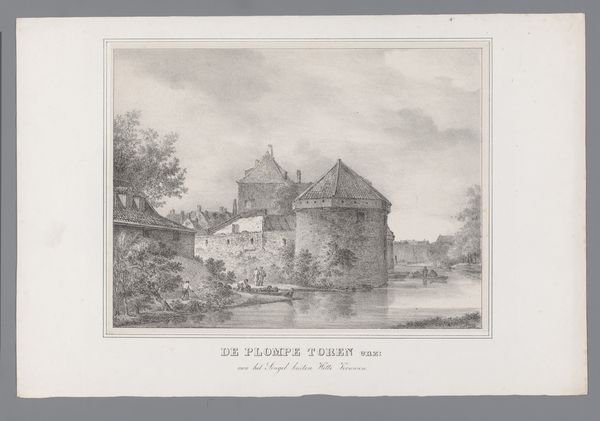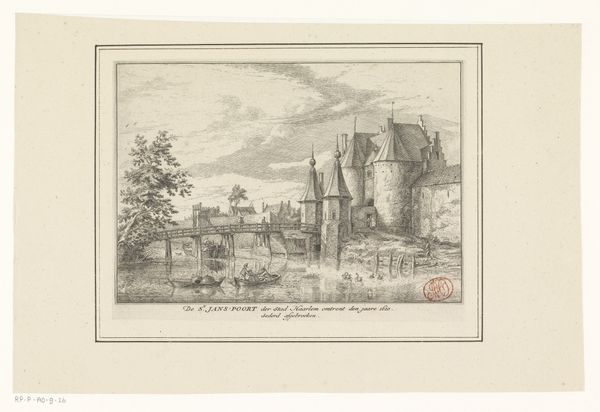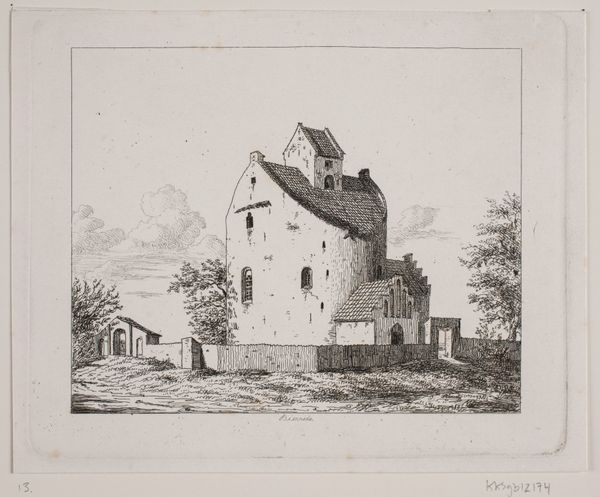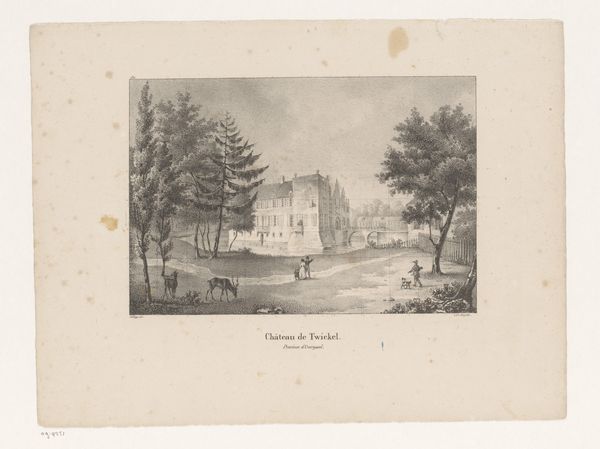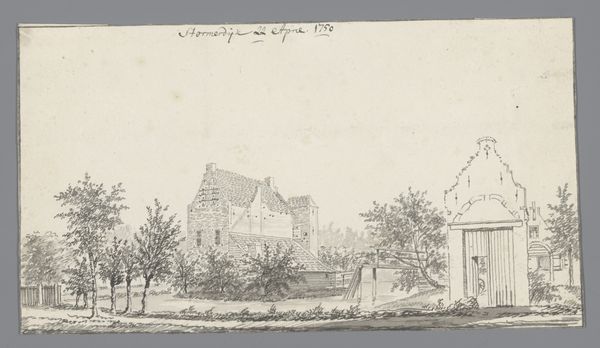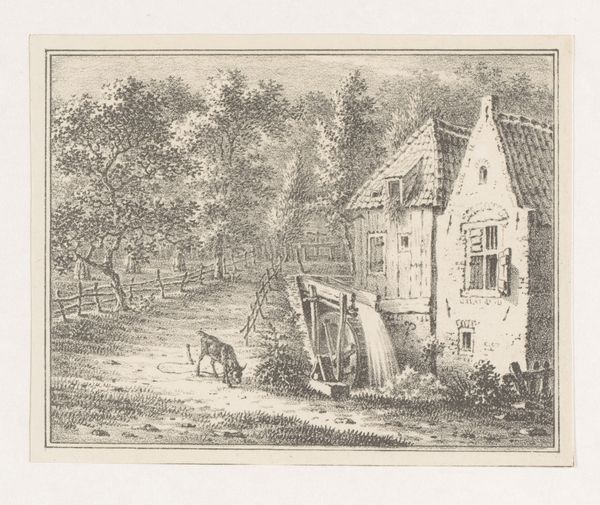
drawing, print, etching
#
drawing
# print
#
etching
#
landscape
#
romanticism
#
cityscape
#
realism
Dimensions: height 280 mm, width 420 mm
Copyright: Rijks Museum: Open Domain
Curator: Here we have Cornelis van Hardenbergh’s "Plompetoren in Utrecht als ruïne," dating from around 1809 to 1843. It’s currently held in the Rijksmuseum. This etching presents a vision of a decayed tower nestled within a cityscape. Artist: Ruin, decay, melancholy…I find myself drawn to its almost ghostly quality. It's incredibly detailed for an etching; the lines create a stunning tonal range, really giving it depth. The contrast between light and shadow almost makes it pulse with a forgotten energy. Curator: Exactly! This depiction of the Plompetoren as a ruin isn't merely a picturesque scene; it speaks volumes about the shifting cultural values and political turbulence of the era. The early 19th century in the Netherlands was marked by French occupation and subsequent nation-building. Romanticism heavily influenced art at the time, often leading to glorification of the past but sometimes tinged with commentary on societal instability. Artist: You can definitely feel that tension here. Look at how the romantic sensibility, this glorification you mentioned, clashes with this hard realism of decline, evident in the crumbling façade. What was the tower like originally? Curator: It was part of the city's medieval fortifications, playing a significant role in defense. Its degradation over time mirrors the erosion of old power structures in the face of Napoleonic reforms and a broader movement towards modernization. Consider also the people depicted near the base of the tower, their presence almost mocks its former importance. Artist: There is also an undeniable beauty to that decline; perhaps its part of what draws me to it so much. The encroaching nature, for example – vines creeping up stone, reclaiming what was once strictly architecture. The building is literally returning back to earth. And the person standing in the open doorway hints at domesticity that still holds, but probably not for much longer. It feels so transient. Curator: Absolutely. The artwork operates on these layers, oscillating between celebration of historical grandeur and somber acknowledgement of its ephemerality. Van Hardenbergh's artistry lies in capturing that precarious balance. His etching serves as both historical documentation and cultural critique. Artist: A dance of time and power, etched in shadows… Makes you think about what all things inevitably decay… What structures do we hold up that won't stand forever? It’s really striking. Curator: Indeed. It prompts us to examine how we assign value to our heritage and the narratives we construct around national identity, even within ruin.
Comments
No comments
Be the first to comment and join the conversation on the ultimate creative platform.
